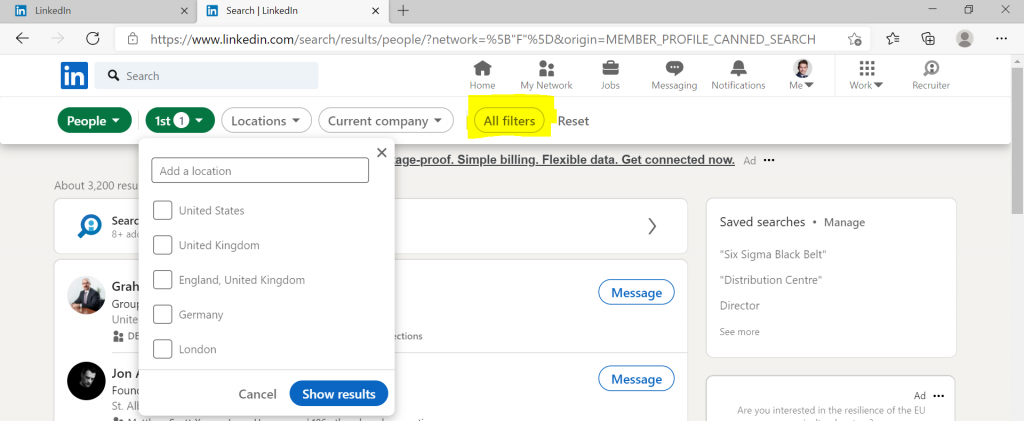You have worked in Medical Devices for over a decade now, so when faced with a task to build your team, there are dozens of meaningful connections that you know would be a great fit. When trying to attract this talent, however, you compete with larger more established organisations, or suddenly your team needs to grow larger than your network can satisfy and you are forced to attract, screen and hire professionals you may not know.
Let us share a few tips on how to recruit well outside of your own network.
#1 Check your network again.
Yes, seems trivial, you feel you already thought of everyone you know. Time and time again, we are given a role to fill and you would be surprised how often people say ‘but… we know this guy’ or ‘someone in my team knows her’. Yet, when we spoke to them, they said they had never been approached by this company before. Although, recruiter’s scope of work is much larger than just connecting the right people (probably an idea for a separate post), it feels tough to pay for something you could have potentially gotten yourself for free.

This can be avoided by following these few steps:
- Check your own network again – look through your own LinkedIn connections. Perhaps, you have connected to someone in the past, even though you didn’t know them at the time,
- Make your existing team well aware that you are looking (providing, you are not trying to replace one of them of course…),
- Create a referral scheme for your employees and reward meaningful introductions (pro tip for hiring at scale – look up gamification).
#2 Create a meaningful and attractive job add and promote it.
If filling a role is time sensitive, the first thing to do is to post a job add. This gives you a pool of candidates that are actively looking, meaning most of the time they are ready to start, they are not bound by a non-compete and they may feel pressured to secure a job.
Make the most of this step by:
- Taking time to write your add. This is your first filter, as well as, a tool to promote your brand and yourself as an employer,
- Trying to reach as many potential candidates as possible. Think where your target audience may be (VP of Sales might be looking on a different platform than an AVP or Regional Manager). Check out forums or interest groups and share your job post there.
- Being resilient – a lot of applicants might be irrelevant. Keep at it and check all CVs that came your way.
#3 Attract passive candidates
One of our motto is
‘good candidates rarely search for new jobs’.
We call them passive candidates, those who are happy where they are, but presented with right opportunity they are willing to listen and consider. This should be seen as a long game of building your employer branding and general industry awareness. Build your contact list consistently, add new people to your network every week (although remember: quality over quantity). Make sure your online presence represents who you are, your values and what your company is aiming to achieve.
If you need results now, one on one interactions are most effective
, so approaching relevant professionals yourself and convincing them to give you time and space to pitch them a job. Which will be significantly easier if they have heard of you in the past.
This also needs some planning. After all, if you are approaching someone directly, you want to get in touch with only those whose skills and experience you are truly interested in. You can start by making a list of companies that you would like people from. When selecting those targets try to consider this:
- Business Model – which competitors or companies have similar business model / route to market. For instance, approaching a specific hospital group, or working with specific distributors, or attracting KOL surgeons in your field. This task may broaden your perspective (an RSM from a biologics company may have connections you want to approach, and they will not have a non-compete to work for a spine business, for example),
- Products – make a list of companies that offer similar solutions or tackle similar issue, this can save your time during the onboarding process. For example, there is a difference between selling a total disc replacement to rods, screws and cages.
- Size of business – a VP of Sales at Stryker or J&J will have different set of skills and resources at hand than a professional holding the same position at a smaller organisation.
Look for similarities, this can help you get a good fit. Someone, who had to tackle the same business challenges or opened doors you want to be opening.
All in all, your network is always a great source of candidates who are easy to reach out to. Once you exhaust your network, however, the advice is to spend some time planning before your search, this will increase your chances of getting who you need to make a powerful impact.

Matthew Henshaw is the Founder and CEO of Talanoa, he acts as a recruitment strategist and startup mentor in the medical device industry.
Connect with Matthew on LinkedIn and feel free to talk about your business and recruitment struggles. Let’s see if I can help with my expertise or my own network.



